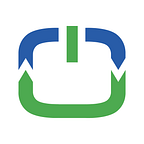The second post in this series focused on the third goal of the National Blueprint for Lithium Batteries, 2021–2030, “Stimulate the U.S. electrode, cell, and pack manufacturing sectors,” and a specific near-term (2025) objective, “Promote the development of novel cell designs that reduce processing time, enable faster cell assembly, and decrease formation costs.”
While the Blueprint states what to do, Dr. George Crabtree, Director, Joint Center for Energy Storage Research (JCESR), Argonne National Laboratory, described one way to do it in a December 2019 article, “What Should the United States Do to Regain Leadership in Lithium-ion Battery Manufacturing?” He identifies a silicon-anode that significantly increases the energy density of lithium-ion batteries, but qualifies that, “the anode material must contain a significant amount of silicon, as much as 50% or more.”
Conventional Li-ion Cell Architecture
The illustration below shows a cross-section of a conventional lithium-ion (Li-ion) cell architecture, where electrodes and separators are wound to fit into a rectangular metal case or a polymer pouch. Most Li-ion batteries use a graphite anode, which is carbon in a crystalline form with a theoretical specific capacity of about 372 milliamp-hours per gram (mAh/g). Researchers have long known that a silicon anode could significantly increase the energy density of a Li-ion battery because it has a theoretical specific capacity of about 3,579 mAh/g, over 9 times that of graphite.
Producers, such as Panasonic and LG Chem, have added about 3% to 7% silicon to graphite to increase battery energy density slightly. But a conventional lithium-ion battery can’t practically accommodate a silicon-dominant anode without sacrificing cycle life. That’s because a predominately silicon anode can cause a conventional Li-ion cell to swell significantly during charge and shrink proportionally during discharge. Repeated swelling and shrinking causes silicon particles to pulverize. As a result, a conventional Li-ion cell with a 100% silicon anode has a very short cycle life, often less than 100 full-depth of discharge cycles to 80% capacity.
Enovix 3D Cell Architecture
The Enovix 3D cell is the most significant battery architecture advancement in the last 30 years, in large part because it is well suited to accommodate silicon as the only active lithium cycling material in the anode (i.e., 100% active silicon).
Above is a cutaway, cross-section illustration of Enovix 3D cell architecture showing the orientation of the electrodes, current collectors, separators, and stainless-steel end plates enclosed by stainless-steel constraints. Below is a photomicrograph cross-section of an Enovix 3D cell. Electrodes (A) are stacked side-by-side and enclosed top and bottom with thin (50 micron), lightweight stainless-steel constraints (B) that hold stainless-steel end caps (C) in place. The end caps apply sufficient restraining force on the electrode stack to contain silicon expansion within the cell and limit external swelling during charge cycles.
3D cell architecture enables Enovix to produce an advanced Li-ion battery with a 100% active silicon anode that is expected to have energy density of 900 Wh/l when it ships commercially in Q2 2022 — this projects to be 5 years ahead of current standard Li-ion battery production. And typical swelling of an Enovix 3D cell after 500 cycles is less than 2% — even less than that of a standard Li-ion cell with a graphite anode. Clearly a win-win in advanced Li-ion battery performance.
But this impressive performance is meaningless unless the batteries can be produced cost-effectively at scale. In the next post, we’ll take a closer look at our ‘drop-in’ cell assembly production process, an equally innovative achievement.
